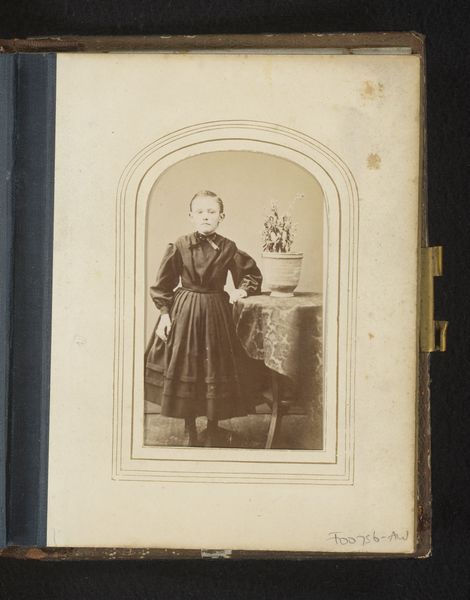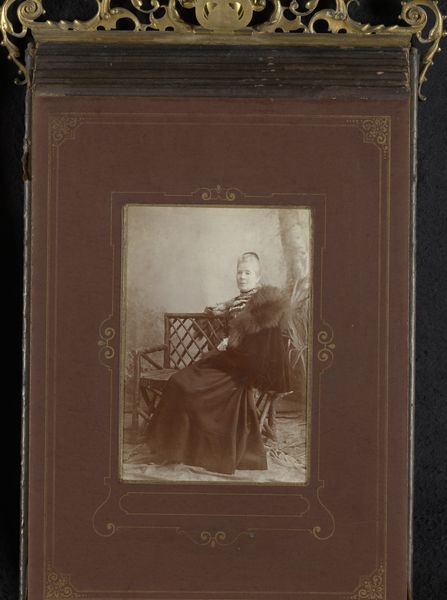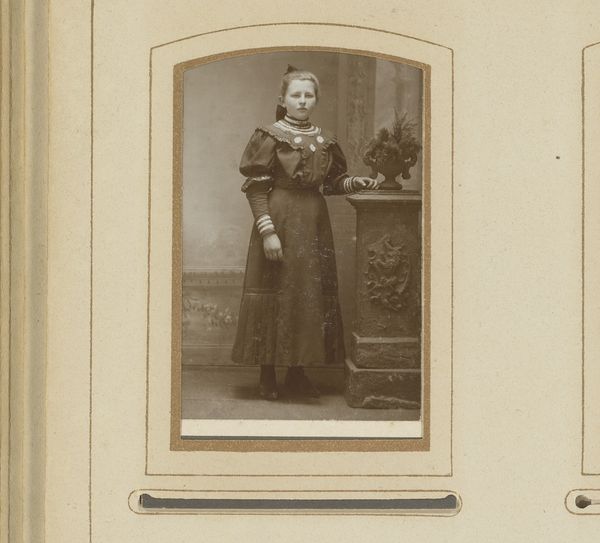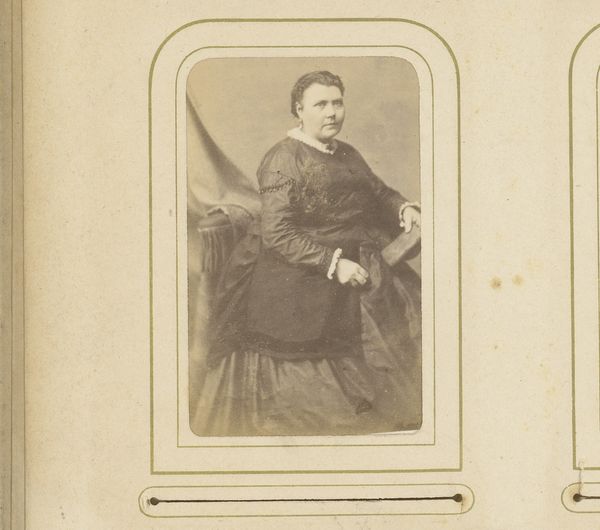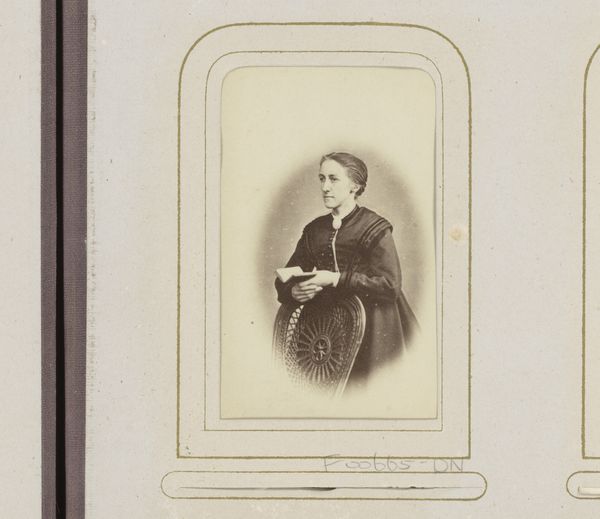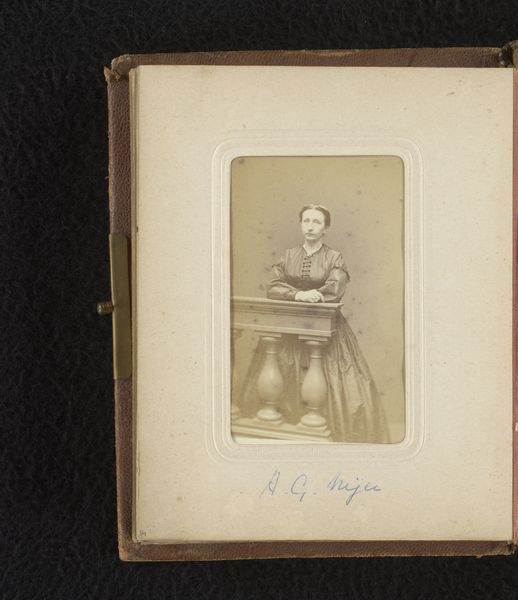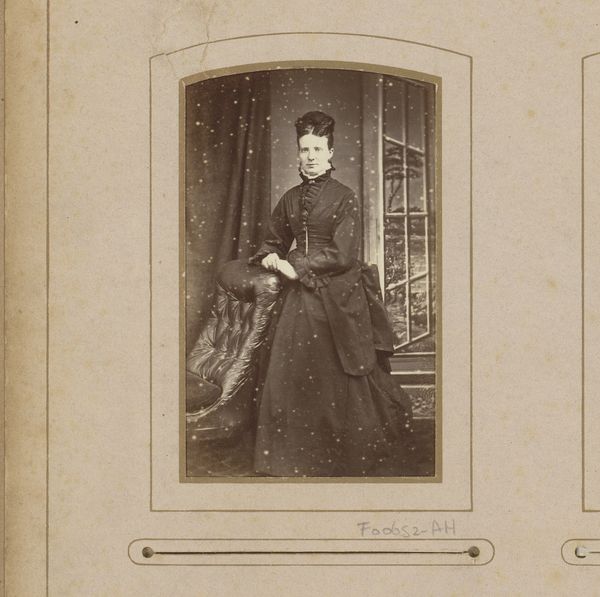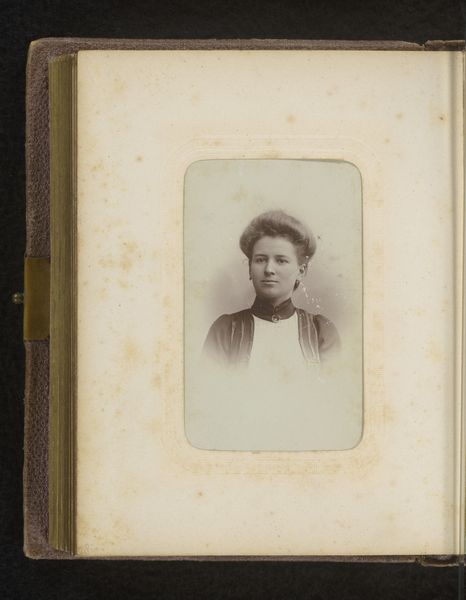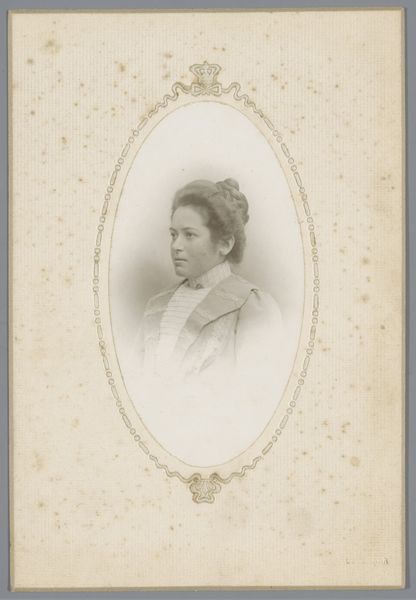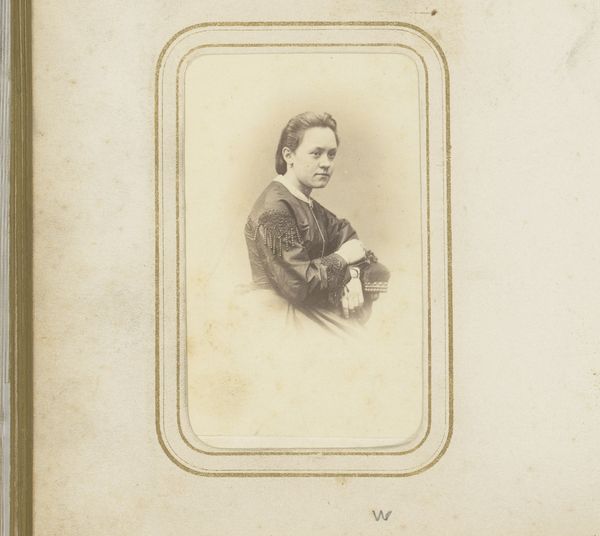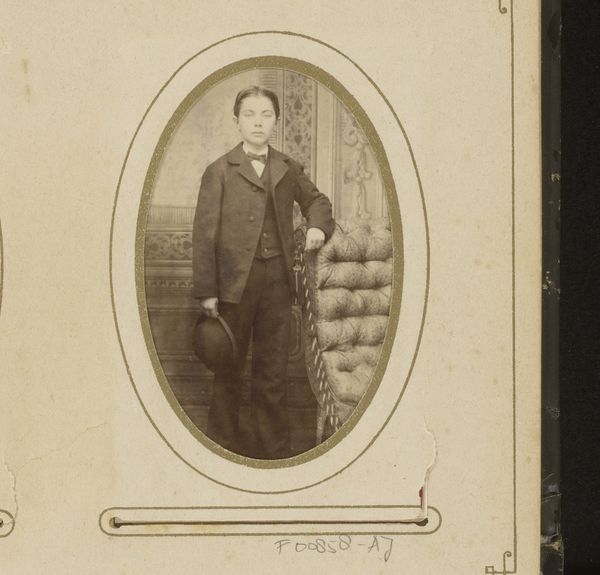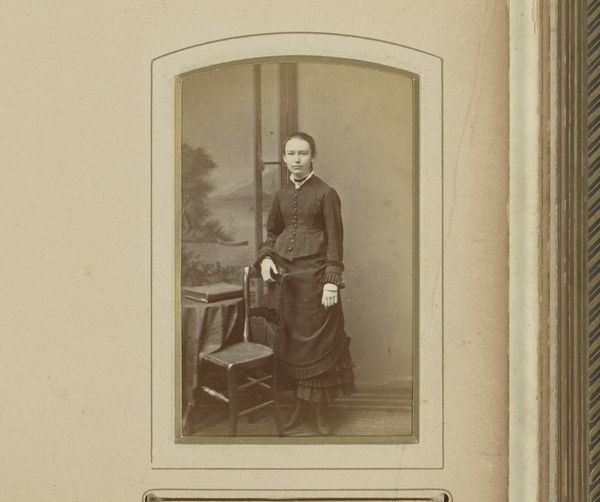
photography, albumen-print
#
portrait
#
photography
#
albumen-print
Dimensions: height 136 mm, width 96 mm
Copyright: Rijks Museum: Open Domain
Editor: This is an albumen print entitled "Portret van een oude vrouw," created sometime between 1880 and 1920, attributed to The Parisian Art Photographic Company. It's presented in an album, giving it a very personal feel. I’m immediately struck by the somber quality, yet also a sense of quiet dignity. What do you see in this piece, particularly from a materialist perspective? Curator: From a materialist viewpoint, I’m interested in the albumen print process itself. It was a dominant mode of photographic production at this time, offering a specific tonal range and clarity achievable through the layering of albumen emulsion. This print wouldn’t exist without industrial scale egg production. Also notice the presentation within an album, suggesting domestic consumption and display. This moves the photograph away from purely fine art to something intimately intertwined with bourgeois family life. Do you think the company name, “Parisian Art Photographic Company,” speaks to its aspiration for art status? Editor: It certainly does seem like they are trying to elevate the status of photography. But considering the sitter, what does the company get out of depicting an old woman, rather than a noble or socialite? Curator: That's a great question. It brings to the fore the idea of democratization through technology and commodification. Portraiture, traditionally reserved for the wealthy, became more accessible to a broader segment of the middle class via the relatively lower cost and greater availability of photographs. Her presence marks an expanded consumer base and suggests her economic stability and means for conspicuous consumption, marking both the desire to participate in and benefit from industry. Editor: That’s fascinating! I hadn't considered how the accessibility of photography relates to economic shifts. Thanks for that insight. Curator: My pleasure. Thinking about the material conditions surrounding artistic production always provides new lenses to view these pieces.
Comments
No comments
Be the first to comment and join the conversation on the ultimate creative platform.
